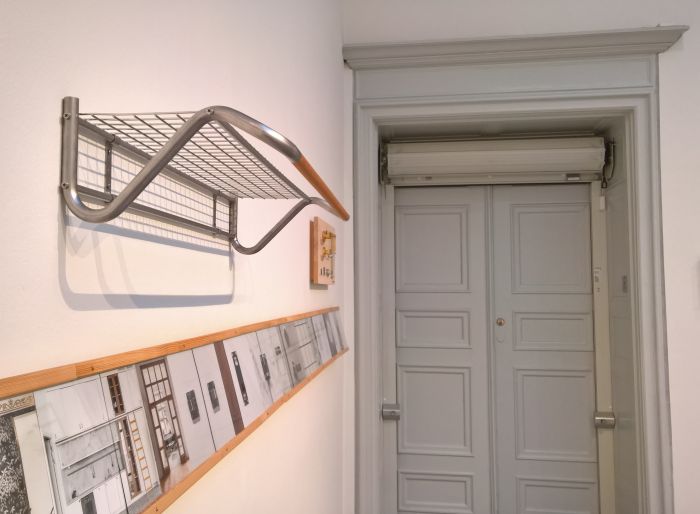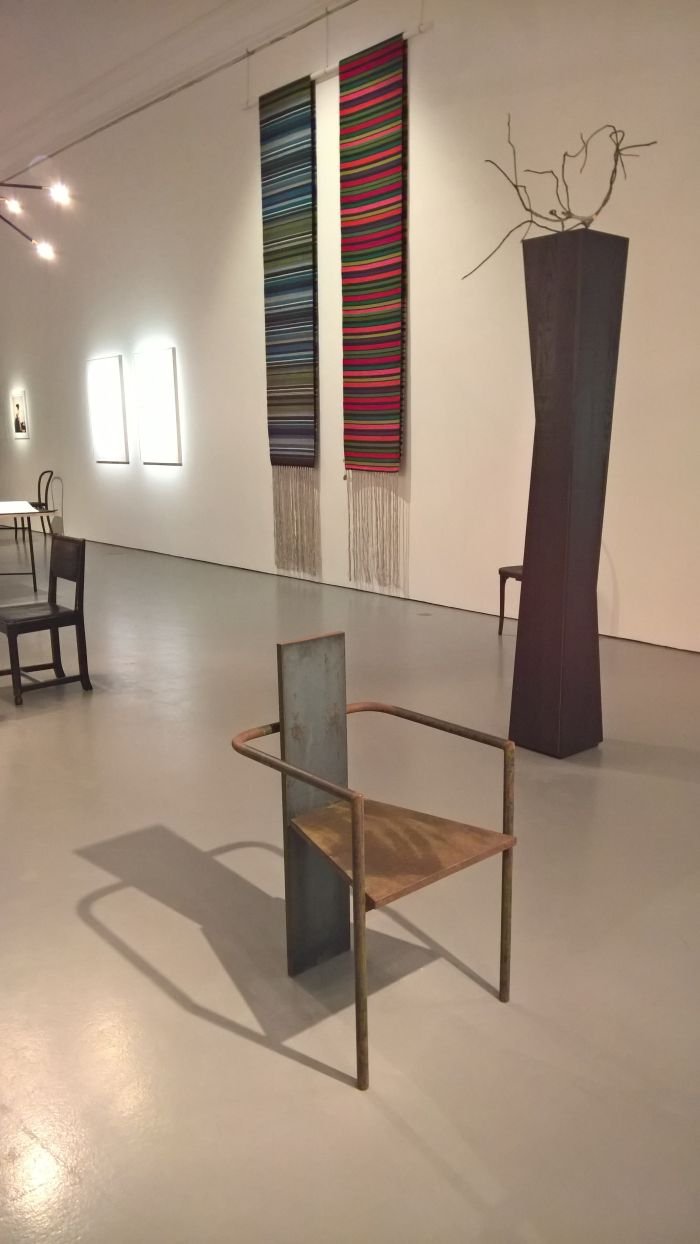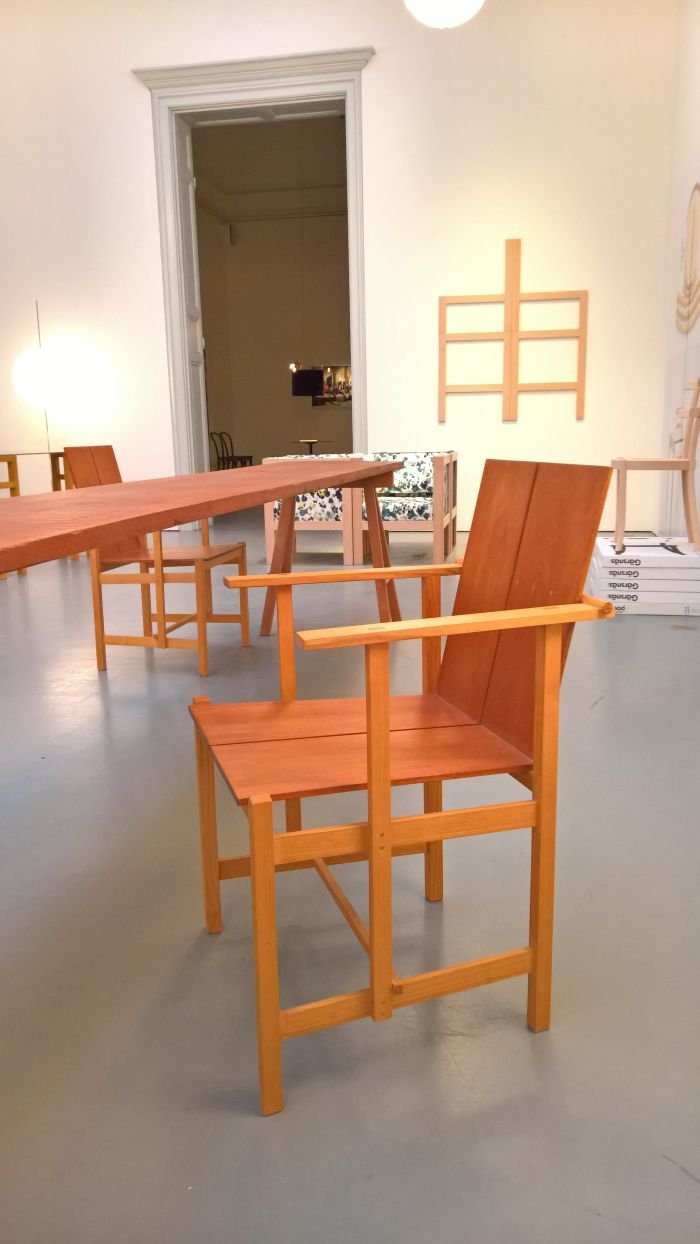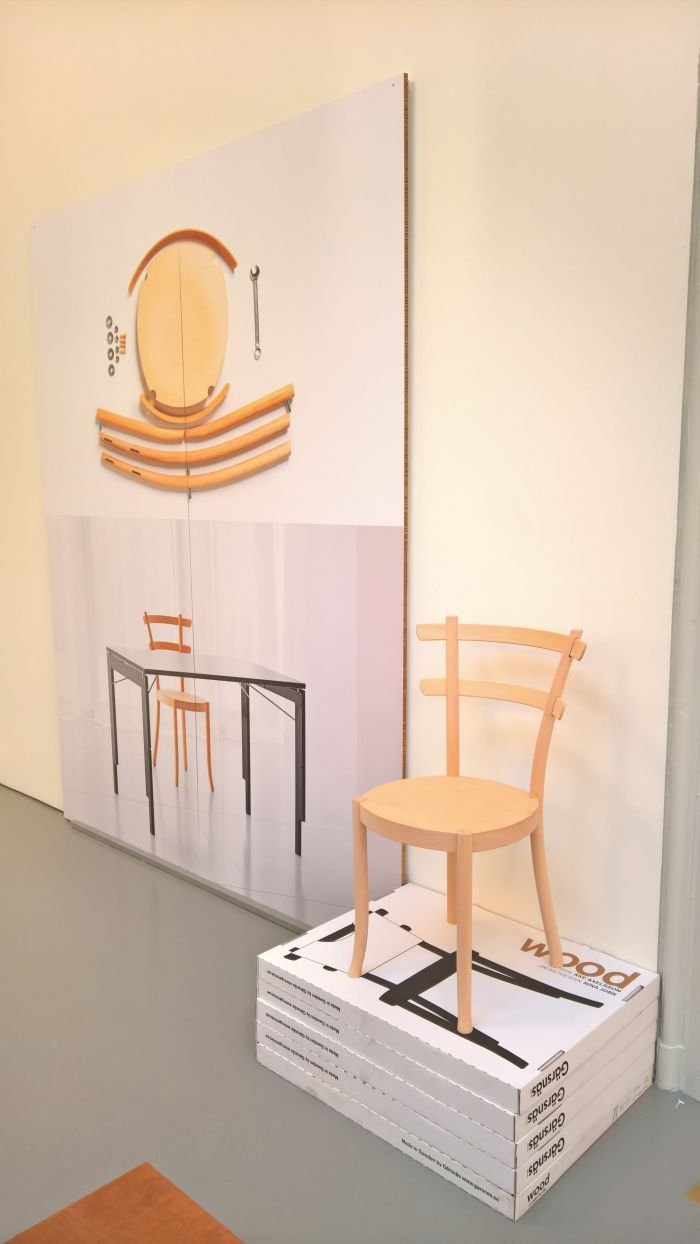With the exhibition INSIDE architecture by Åke Axelsson, Jonas Bohlin, Mats Theselius Sweden's Konstakademien, Royal Academy, pay tribute not to the architecture of Messrs Axelsson, Bohlin & Theselius, but to the interior and furniture design work of three: and in doing so neatly underscore the function of the interior architect and the important link between interior design and furniture design.
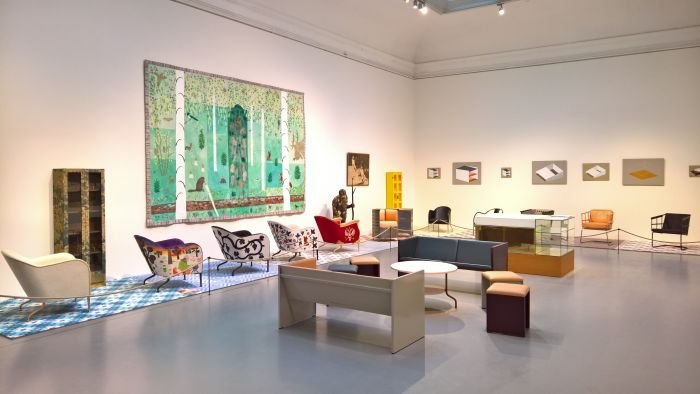
In many regards one can find the roots of interior architecture in the Gesamtkunstwerk principle followed by architects since, arguably, time immemorial, but which, equally arguably, took on a genuine relevance and popular acceptance in the late 19th/early 20th century as the likes of Charles Rennie Macintosh, Otto Wagner, Peter Behrens, et al not only made control over all aspects of a space a condition for accepting architectural commissions, but who also saw it as logical, when not imperative, that they created furniture objects for the new space. A tradition which has been followed over the intervening decades by the likes of, and amongst many others, Frank Lloyd Wright, Florence Knoll, Egon Eiermann, Arne Jacobsen or Alexander Girard.
As INSIDE makes very clear, Åke Axelsson, Jonas Bohlin, Mats Theselius can all be considered firmly in that tradition.
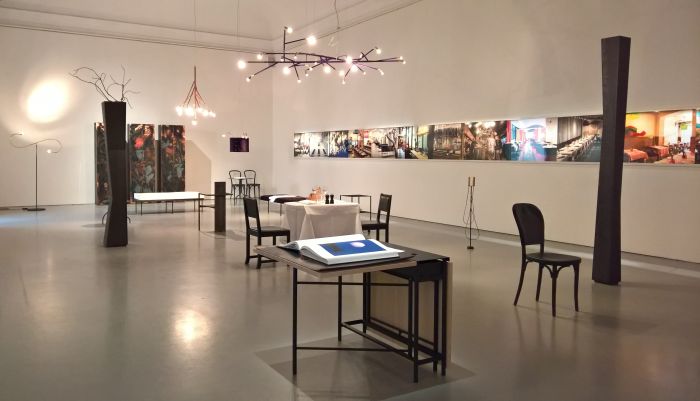
It is an all too rarely voiced truth that most furniture items considered "classics", and certainly many of the more coherent and logical contemporary furniture objects, those which future generations may class "classic", arose in context of interior architecture projects; not always, but when one considers works such as, and amongst many others, Alvar Aalto's Paimio lounge chair, Charles & Ray Eames Aluminium Chairs, Ronan & Erwan Bouroullec's Copenhague collection etc, etc etc, one understands just what a fertile furrow it is. The reason is simple. Created as they are in context of a specific project, a specific space, specific functional and formal demands, the designer, when working competently and diligently, focusses on the context, and not all those other distractions a designer sat at their desk studiously trying to create a chair has to contend with. And in doing so creates something coherent and logical, rather than something technically correct.
As an exhibition INSIDE neatly supports this truism, not least in context of Åke Axelsson's furniture designs, in particular the chairs created for....
.......and so we arrive at one of the weak points of the exhibition.
Whereas the projects themselves are well described, the individual furniture objects aren't always. Which doesn't detract from the furniture, does make telling people about them difficult. However, from Åke Axelsson's oeuvre three chairs particularly caught our attention: that created for Vreta Abbey; a chair we are calling the Plankan Chair; and a rocking chair possibly created for Sven-Harrys Konstmuseum in Stockholm. Terrifyingly competent pieces of furniture design all three, yet works which, as far as we understand, never entered production. Which would be the sort of negligence only the Swedish furniture industry can explain.
Or at least attempt to explain.
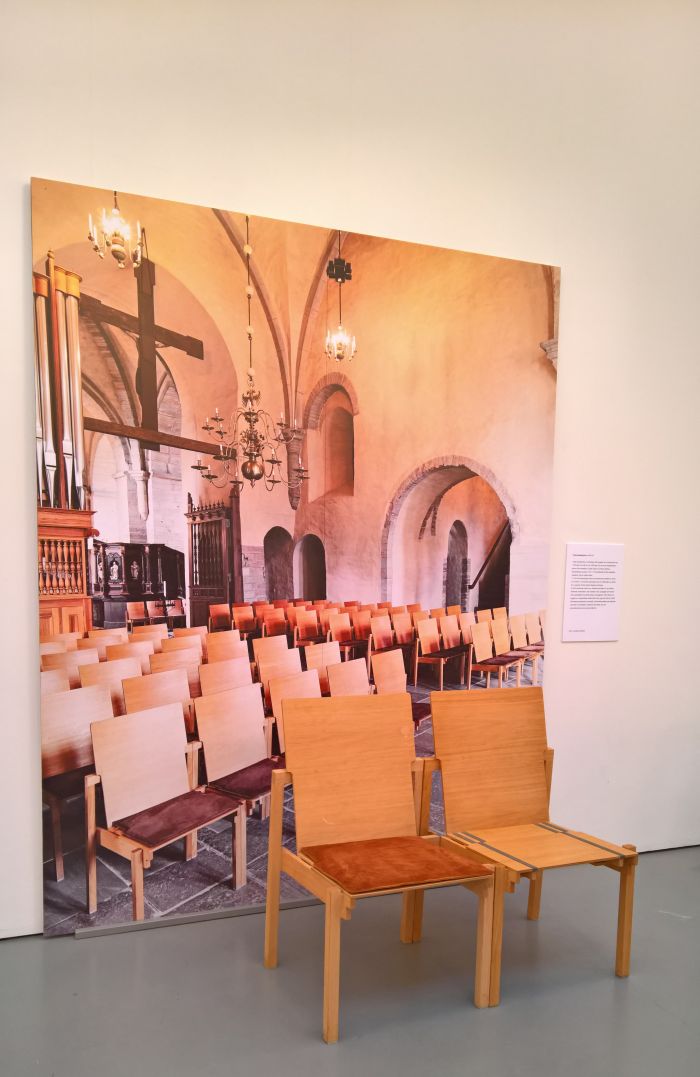
As regular readers will be aware we yield ground to no-one in our admiration for the furniture designs Egon Eiermann realised for his church projects, for all the objects realised for the Kaiser-Wilhelm-Gedächtnis-Kirche in Berlin, but also, and to a lesser extent, the Matthäuskirche in Pforzheim. Åke Axelsson's chair for Vreta Abbey surpasses them all. A simple wooden chair where the frame and seat/backrest appear to have developed independently of one another and then awkwardly joined in an act of deadline induced desperation: yet despite their challenging structure and geometry the chairs effuse a most intoxicating calm, possess an inherent logic and and have a humbling honesty about them. And offer the most satisfyingly high degree of sitting comfort. Just genuinely delightful objects.
Similarly reduced, brutalist, uncompromising and every bit as honest and endearing is the work we're referring to as the Planken Chair, a work which were it not for the regularity of the lattice construction would vanish into its own reduction: then there is the wooden and leather rocking chair which may, or may not, have been developed for Sven-Harrys Konstmuseum in Stockholm. An unfamiliar form, structurally and materially challenging, arguably there is far, far too much going on in the design, yet somehow it manages to control the chaos and present itself with a very satisfying formal clarity. Similarly the sitting experience, the unfamiliar sail/skiing gate-esque form causes you to approach it with the utmost caution, yet once ensconced you are treated to a most confusingly uncomfortable comfort, i.e while perfectly comfortable for short term sitting, you wouldn't want to spend a whole evening in it. But then if it was created for an art museum, spending a whole evening in it probably isn't the idea.
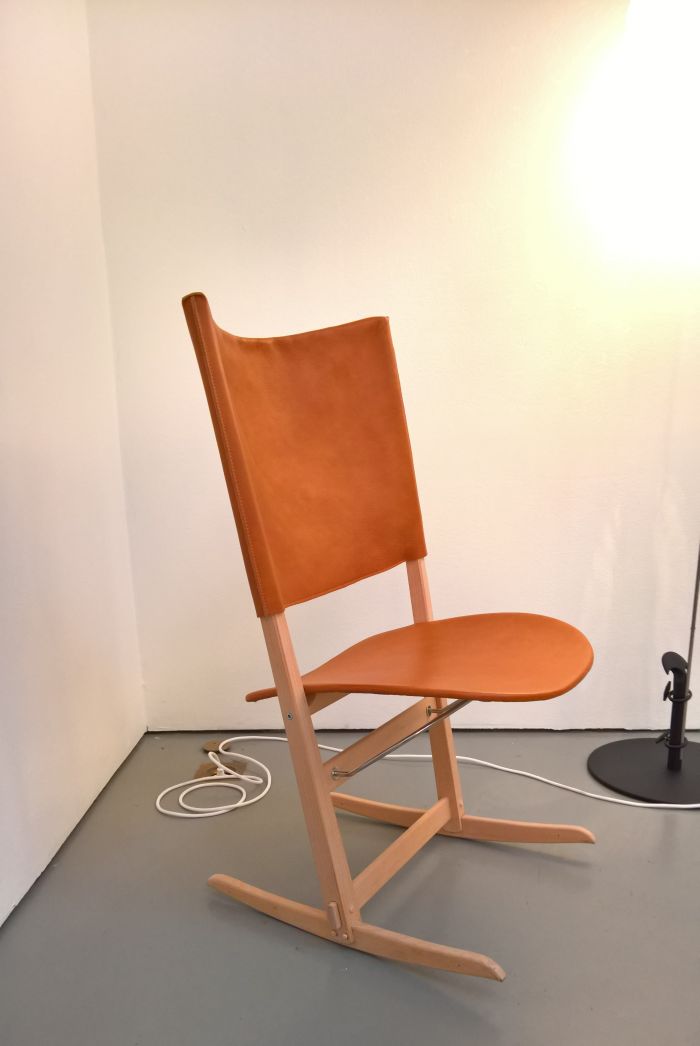
Although largely about the trio's interior design projects, INSIDE does also present projects created independent of such, including Jonas Bohlin's concrete and steel armchair, a project created in context of his 1981 Graduation Project at Konstfack Stockholm and a work which remains every bit as communicative, radical and relevant today as we imagine it was then.
And a work which neatly illustrates the hang to the irreverent experimentation of post-modernism to be found throughout the works of both Bohlin and Mats Theselius. Not an unpleasant hang, but undeniable, and one which both separates the two younger upstarts from Axelsson but which also neatly underscores that despite what the easy rhetoric tells us, furniture design in Sweden is more than a few easy buzzwords supported by a sizeable marketing budget.
Other particularly pertinent examples of the formal and conceptual variety of Swedish design being the Lego table developed by Jonas Bohlin, a work which has an almost Shaker-esque reduced functional beauty; a coat/hat rack originally developed by Mats Theselius for IKEA and which formally stops tantalisingly short of being bicycle handle bars; and perhaps as the most endearing example the so-called Lodger Sofa and Lounge Chair by Mats Theselius together with Andreas Roth, a work of folded sheet steel which not only carries itself with the most wondrous charisma but offers the most satisfyingly sitting experience. A comfort way above anything you'd expect from a squat steel box.
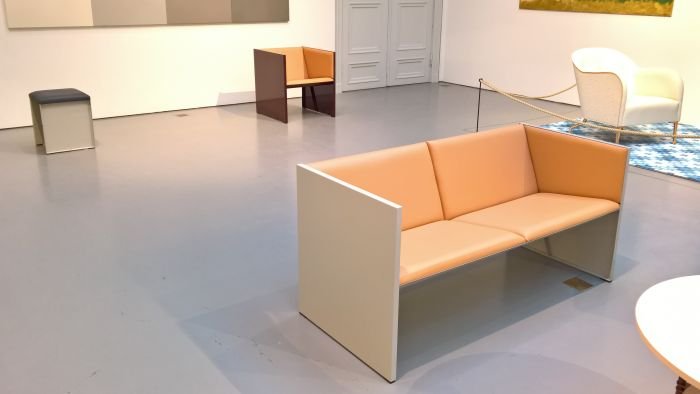
Beyond the works on display the real highlight for us about INSIDE is, and as more diligent readers will already have ascertained, that you can sit on the chairs. Not all. But most. Which of course should always be the case in furniture exhibitions. The sitting experience being as it is essential, fundamental, to considerations on any chair design. Yet which is something curators normally feel it is acceptable to deny visitors. INSIDE helps explain the stupidity of such decisions.
Despite the number and variety of objects on display the natural limitations of the Konstakademien's exhibition space means that INSIDE simply cannot be expansive enough to allow for a full exploration of the three's oeuvres. Much as you want it to. However through presenting a mix of furniture, lighting and decorative objects backed up by photographs of completed projects and sketches of projects in planning INSIDE does provide three very well paced, insightful and entertaining introductions to three very different proponents of their craft.
And by extrapolation one well paced, insightful and entertaining introduction to interior designing and the craft of the Gesamtkünstler.
INSIDE architecture by Åke Axelsson, Jonas Bohlin, Mats Theselius can be viewed at Konstakademien, Jakobsgatan 27 C, 111 52 Stockholm until Sunday March 11th
Further details can be found at http://konstakademien.se
